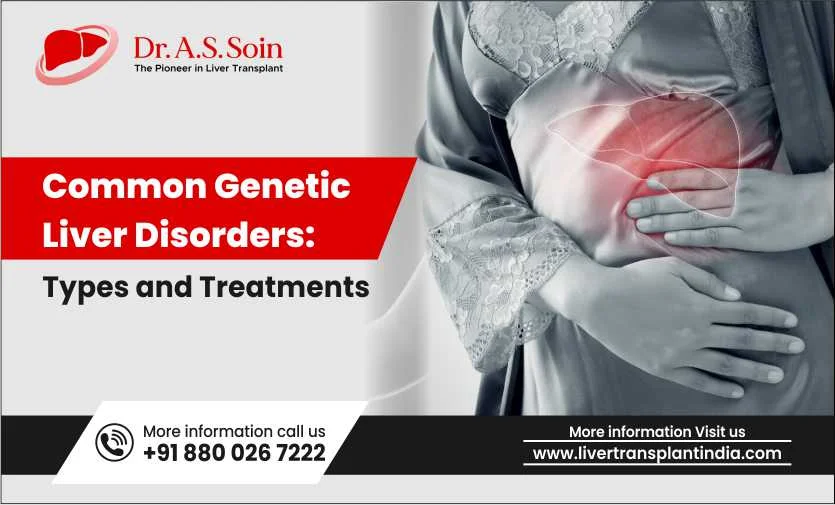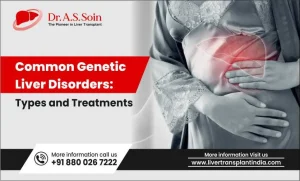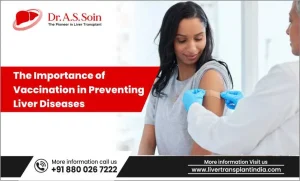The liver quietly powers through countless vital functions—breaking down nutrients, detoxifying harmful substances, and producing proteins essential for blood clotting. While many liver conditions stem from lifestyle habits or infections, others are inherited, passed down through generations. In this article, we’ll walk you through some of the most common genetic liver disorders, what symptoms to look out for, and how today’s medicine is helping people live fuller, healthier lives despite these conditions.
Table of Contents
ToggleWhat Are Genetic Liver Disorders?
Genetic liver diseases are inherited conditions caused by mutations in certain genes. Unlike issues triggered purely by environment or lifestyle, these disorders are present from birth—though symptoms may not always appear early on. Some people might never realize they carry a genetic liver condition unless it’s picked up through tests or symptoms arise later in life. Others may face more serious challenges, including liver damage, cirrhosis, or even liver failure.
The good news? Medical advancements have dramatically improved outcomes. With early diagnosis and tailored treatment, many people lead stable and productive lives.
Common Genetic Liver Conditions and How They’re Treated
Let’s look at some of the more frequently diagnosed genetic liver diseases—how they show up, and the current approaches to managing them.
Wilson’s Disease
This rare condition causes the body to accumulate copper, which can harm the liver, brain, and other organs. Normally, excess copper is filtered out through the liver, but in Wilson’s disease, this process doesn’t work correctly.
Symptoms May Include:
- Neurological Signs: Tremors, muscle stiffness, or speech difficulties.
- Mental Health Changes: Mood swings, irritability, depression.
- Liver-Related Issues: Jaundice, abdominal swelling or discomfort.
- Eye Changes: Brownish-green rings (Kayser-Fleischer rings) around the cornea.
Treatment Options:
- Chelation therapy: Medications help flush copper from the body.
- Zinc supplementation: Prevents copper absorption in the gut.
- Diet changes: Avoid copper-rich foods like nuts, chocolate, and shellfish.
- Liver transplant: Considered if liver damage is severe.
Hemochromatosis
Often referred to as “iron overload,” this condition causes the body to absorb too much iron from food. Excess iron is stored in organs such as the liver, pancreas, heart, and joints, which can eventually cause long-term damage.
What to Watch For:
- Constant tiredness or weakness
- Joint or abdominal pain
- Skin that looks bronzed or grey
- Heart rhythm problems
- Diabetes due to iron buildup in the pancreas
Management:
- Regular phlebotomy: Removing blood periodically lowers iron levels.
- Chelation therapy: An option for those who can’t undergo blood removal.
- Dietary adjustments: Limit iron-rich foods and avoid vitamin C supplements.
- Ongoing monitoring: Helps track iron and liver enzyme levels.
Alpha-1 Antitrypsin Deficiency (AATD)
AATD interferes with the production of alpha-1 antitrypsin, a protein that protects the lungs. When malformed, this protein gets trapped in the liver, potentially leading to liver and lung disease.
Possible Symptoms:
- Jaundice, pale stools, or dark urine in children
- Breathing issues or emphysema in adults
- General fatigue and abdominal discomfort
How It’s Treated:
- Close monitoring: Regular liver function tests and imaging.
- Symptom management: Medications for inflammation or lung support.
- Lifestyle changes: Avoiding alcohol and staying within a healthy weight range.
- Liver transplant: Needed if liver damage progresses significantly.
Glycogen Storage Diseases (GSDs)
These inherited conditions affect how the body stores and uses glycogen (a sugar reserve). Several types of GSD impact liver function specifically.
Symptoms Might Include:
- Low blood sugar (hypoglycemia)
- Enlarged liver
- Delayed growth in children
- Muscle weakness (in some subtypes)
Treatment Focuses On:
- Diet management: Frequent meals or nighttime feeds to keep blood sugar steady
- Supplements or medications: To prevent metabolic imbalances
- Routine checkups: Track growth, sugar levels, and liver health
Progressive Familial Intrahepatic Cholestasis (PFIC)
PFIC is a rare condition that blocks bile from flowing properly out of liver cells. Over time, this buildup causes liver damage.
Common Signs:
- Jaundice from infancy
- Dark urine and pale stools
- Persistent itching
- Poor weight gain or slow development
Management Options:
- Medication: Ursodeoxycholic acid (UDCA) to improve bile flow
- Nutritional support: Ensure proper fat and vitamin absorption
- Surgical options: Biliary diversion may reduce symptoms
- Liver transplant: May be necessary in advanced stages
Diagnosing Genetic Liver Disorders
Early diagnosis can dramatically alter the course of these conditions. If you or someone in your family shows signs like chronic fatigue, unexplained jaundice, or persistent abdominal discomfort, don’t hesitate to speak to a liver specialist. At leading liver transplant centres, diagnostic tools include:
- Blood tests: Check enzyme, copper, iron, and protein levels
- Genetic screening: Detects gene mutations like HFE (hemochromatosis) or ATP7B (Wilson’s disease)
- Imaging: Ultrasounds, MRIs, or CT scans to assess liver condition
- Liver biopsy: Provides detailed tissue analysis when needed
The Future of Liver Care: What’s New?
Thanks to cutting-edge research, treatment for genetic liver disorders has made great strides:
- New medications are more effective at targeting the root problems—such as improved chelators for Wilson’s disease or innovative anti-inflammatory drugs.
- Surgical techniques for liver transplants are now safer and more precise, leading to faster recovery and better long-term results.
- Gene therapy is on the horizon, offering hope for a more permanent fix by correcting genetic errors at their source.
Patients today have more options than ever, and ongoing clinical trials promise even more breakthroughs ahead.
Final Takeaway
Living with a genetic liver condition can feel overwhelming—but it doesn’t have to take over your life. With early intervention, personalized treatment, and expert care, many individuals manage their conditions successfully and enjoy a high quality of life.
If you have concerns about your liver health or a family history of genetic conditions, don’t wait. Reach out to an experienced specialist. At India’s leading liver transplant centre, Dr. A. S. Soin and his team combine world-class expertise with genuine compassion—offering you support at every stage, from diagnosis to advanced treatment or surgery, if needed.
Your liver does so much for you—return the favor by giving it the care it needs.








